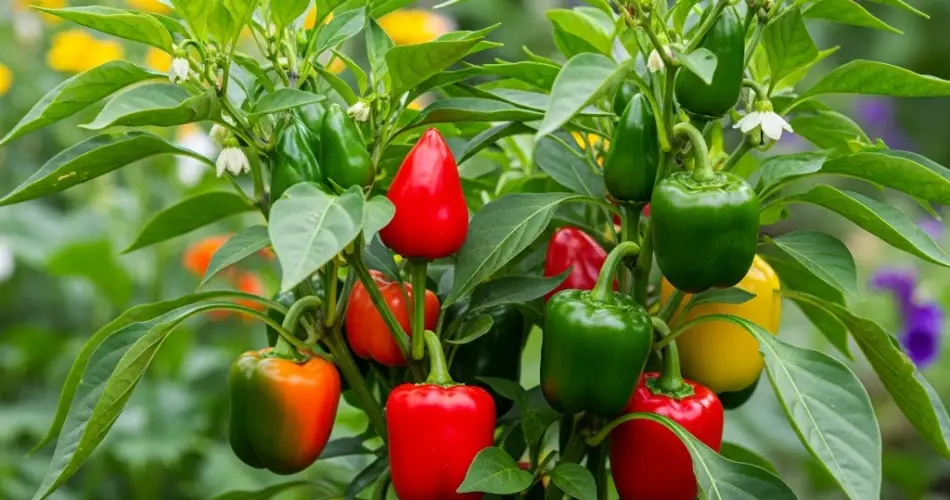If you’ve grown a particularly tasty or productive pepper variety, saving its seeds for next season is a smart and sustainable gardening practice. It allows you to preserve the characteristics you love while saving money and becoming more self-reliant as a gardener. Whether you’re growing bell peppers, hot chili peppers, or sweet varieties, collecting and storing their seeds is straightforward when you follow a few key steps.
This guide walks you through everything you need to know about harvesting, drying, and storing pepper seeds so you can enjoy a thriving garden year after year.
Why Save Pepper Seeds?
Saving your own seeds offers many advantages:
-
Cost-effective – You don’t need to buy new seeds each year.
-
Preserves desirable traits – You can grow the exact variety that thrived in your garden.
-
Adapts to your climate – Seeds from plants grown in your region often adapt better over time.
-
Sustainable gardening – Reduces reliance on commercial seed production and packaging.
Just be sure that the plant you’re saving seeds from is open-pollinated or heirloom. Seeds from hybrid varieties may not produce the same fruit quality in future generations.
Choosing the Right Peppers for Seed Saving
To ensure high germination rates and quality plants, choose healthy, mature peppers from strong plants that:
-
Grew vigorously
-
Produced well
-
Were free from disease
-
Had the best flavor and appearance
Avoid using fruit from weak or pest-infested plants, as this could pass on unwanted traits.
Important: Only save seeds from fully ripe peppers. For most varieties, this means waiting until the pepper has turned its final color—usually red, orange, or yellow, depending on the type.
Step-by-Step: How to Save Pepper Seeds
1. Harvest Fully Ripe Peppers
Pick peppers once they are fully colored and feel slightly soft to the touch. Overripe is better than underripe when it comes to seed maturity.
2. Remove the Seeds
-
Use a clean knife to slice open the pepper lengthwise.
-
Carefully scrape the seeds from the inner core or placenta (the white part inside).
-
Place the seeds in a shallow bowl or on a paper towel.
For hot peppers, wear gloves during this step to avoid skin irritation from capsaicin.
3. Clean the Seeds
Remove any pieces of pulp or pepper flesh. A quick rinse under cool water in a fine-mesh strainer can help, but make sure to pat the seeds dry immediately to avoid premature sprouting or mold.
4. Dry the Seeds Thoroughly
Spread the cleaned seeds out in a single layer on a paper towel, coffee filter, or a mesh screen. Place them in a warm, dry, well-ventilated area out of direct sunlight. Avoid using an oven or dehydrator, as heat can kill the seeds.
Allow seeds to dry for 7–14 days. Stir them gently once a day to ensure even drying and to prevent clumping.
You’ll know the seeds are fully dry when they feel hard and brittle to the touch.
How to Store Pepper Seeds Properly
Once completely dry, store your seeds in a labeled paper envelope, small glass jar, or airtight plastic container. Be sure to include the variety and date collected on the label.
To prolong viability, keep seeds in a cool, dry, and dark place. Ideal storage locations include:
-
A cupboard away from heat
-
A sealed jar in the refrigerator
-
A drawer in a room with stable temperature
Avoid moisture and light exposure, as they can shorten seed life or cause premature sprouting.
Properly stored pepper seeds can remain viable for 2 to 5 years, with germination rates gradually declining over time.
Tips for Successful Seed Saving
-
Isolate pepper varieties if you want to maintain pure seed. Peppers cross-pollinate easily, especially between hot and sweet types. Use distance, barriers, or bagging techniques if growing multiple varieties.
-
Only save seeds from non-hybrid varieties (open-pollinated or heirlooms) for reliable offspring.
-
Test seed viability before planting next season. Place 10 seeds on a damp paper towel, fold it, and keep it moist in a plastic bag for about a week. Count how many sprout to calculate the germination rate.
Final Thoughts
Saving pepper seeds is a rewarding and empowering part of gardening. With just a few simple steps, you can collect seeds from your favorite pepper plants and grow them again next season with confidence. This not only saves money but also allows you to preserve and improve varieties that thrive in your unique garden conditions.
By learning how to properly harvest, dry, and store pepper seeds, you’ll take another step toward sustainable, resilient gardening—and enjoy even more delicious peppers year after year.



